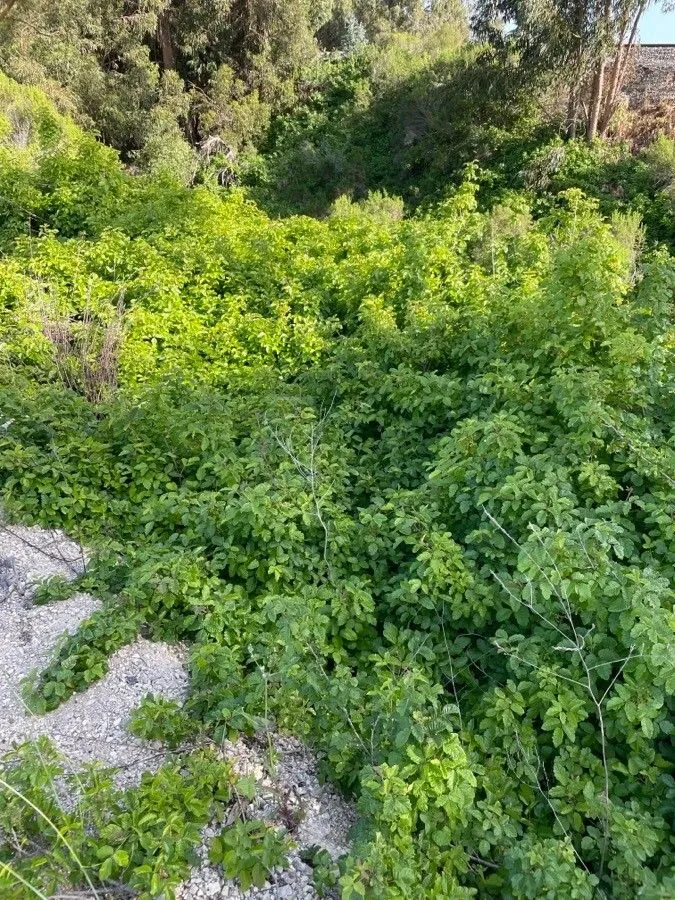
Author: (Torr. & A.Gray) Greene
Bibliography: Leafl. Bot. Observ. Crit. 1: 119 (1905)
Year: 1905
Status: accepted
Rank: species
Genus: Toxicodendron
Vegetable: False
Observations: SW. Canada to N. Mexico (and Michoacán)
Pacific poison oak, known scientifically as Toxicodendron diversilobum, is a perennial plant native to the western regions of North America, including the southwestern parts of Canada, through much of the United States, and into northern Mexico, reaching as far as Michoacán. It belongs to the Anacardiaceae family, which encompasses various species known for their irritating properties.
This plant is characterized by its variable appearance, often presenting as a low-growing shrub or climbing vine, depending on its environment. The leaves of Pacific poison oak, a defining feature, typically grow in clusters of three leaflets, resembling those of the closely related poison ivy and poison sumac. The resemblance is such a common trait within this family that an old saying goes: “Leaflets three, let it be.”
Throughout the year, the foliage of Pacific poison oak undergoes a remarkable transformation. In spring, the leaves are bright green and may have a glossy look. As the seasons progress into summer, they tend to darken, and by autumn, they may turn vivid shades of red and orange, which enhances the beauty of the landscape while simultaneously posing a risk to human health.
The plant produces small, white to greenish flowers that give way to clusters of white or tan berries. Bird species are particularly attracted to these berries and play a crucial role in seed dispersal, contributing to the widespread distribution of Pacific poison oak.
One of the most notable features of Toxicodendron diversilobum is its production of urushiol, an oily organic allergen. Contact with urushiol can cause severe dermatitis, an itchy and painful rash that affects many people who come into contact with any part of the plant. Consequently, while Pacific poison oak plays a role in its natural habitat, it is also something hikers, gardeners, and outdoor enthusiasts must learn to recognize and avoid.
Despite its notorious reputation, Pacific poison oak holds ecological importance. It provides food and habitat for wildlife, and its adaptability makes it an integral part of the ecosystems it populates. Researchers and botanists continue to study this plant not only for its biological impact but also to better understand the mechanisms of urushiol and potential treatments for the allergic reactions it causes.
First documented in “Leaflets of Botanical Observation and Criticism” in 1905 by Elliott Coues Greene, its classification has been shaped by the work of renowned botanists John Torrey and Asa Gray. Their contributions to the botanical sciences have helped frame our understanding of many plant species, including the Pacific poison oak.
In summary, while Pacific poison oak is a plant that warrants caution due to its urushiol content and the subsequent allergic reactions it can trigger, it also plays a vital role in the ecosystems of the western regions of North America. Its diverse appearances and seasonal changes make it a fascinating subject for those interested in botany and ecology.
Eng: pacific poison oak, pacific poison-oak, western poison-oak, poison oak, western poison oak
Fra: sumac de l’ouest
En: Pacific poison oak, Pacific poison-oak, Western poison-oak, Poison oak, Western poison oak
Fr: Sumac de l’Ouest
Taken Apr 6, 2022 by Dan Maxwell (cc-by-sa)
Taken Apr 18, 2022 by Adam Laskowitz (cc-by-sa)
Taken Apr 6, 2022 by Dan Maxwell (cc-by-sa)
Taken Sep 22, 2021 by Jillian Self (cc-by-sa)
Taken Jul 9, 2022 by mlb le (cc-by-sa)
Taken Apr 6, 2022 by Dan Maxwell (cc-by-sa)
© copyright of the Board of Trustees of the Royal Botanic Gardens, Kew.
Growth habit: Vine, Shrub
Family: Myrtaceae Author: (F.Muell.) K.D.Hill & L.A.S.Johnson Bibliography: Telopea 6: 402 (1995) Year: 1995 Status:…
Family: Rubiaceae Author: Pierre ex A.Froehner Bibliography: Notizbl. Bot. Gart. Berlin-Dahlem 1: 237 (1897) Year:…
Family: Sapindaceae Author: Koidz. Bibliography: J. Coll. Sci. Imp. Univ. Tokyo 32(1): 38 (1911) Year:…
Family: Asteraceae Author: A.Gray Bibliography: Pacif. Railr. Rep.: 107 (1857) Year: 1857 Status: accepted Rank:…
Family: Fabaceae Author: Medik. Bibliography: Vorles. Churpfälz. Phys.-Ökon. Ges. 2: 398 (1787) Year: 1787 Status:…
Family: Aspleniaceae Author: (Cav.) Alston Bibliography: Bull. Misc. Inform. Kew 1932: 309 (1932) Year: 1932…